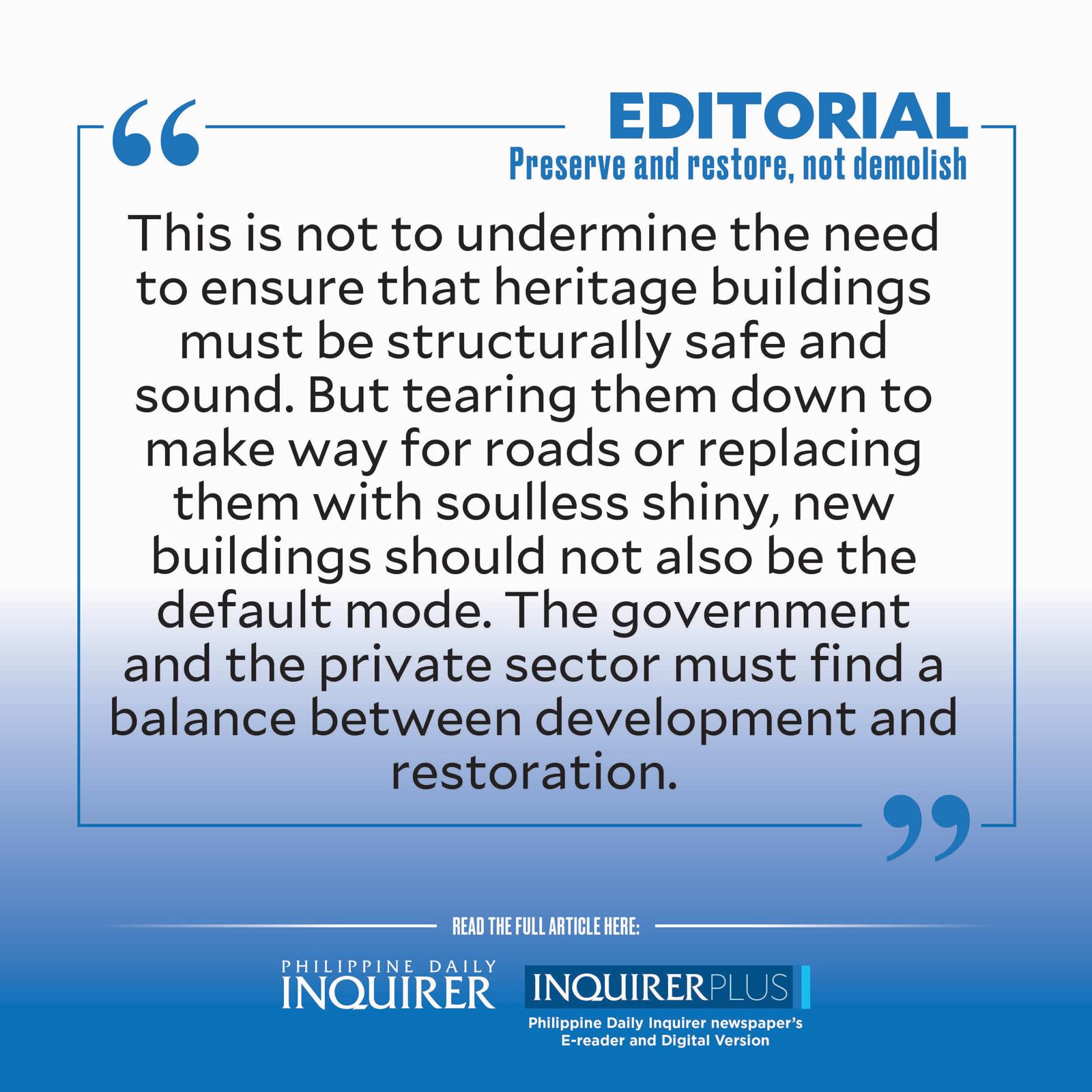
Another heritage building is set to face the wrecking ball: the 104-year-old Sta. Mesa Fire Station along Magsaysay Boulevard in Manila.
The fire station was built in 1919—the last in the American and prewar era. It was designated as Station Number 8 and survived World War 2. Today, its age shows in the wobbly staircase, peeling ceilings, damaged drainage system, and a crack in the fireman’s pole. The building shakes during earthquakes and firefighters assigned there fear that the building will collapse on them one day. Needless to say, the station has seen better days. But is demolishing it the only solution?
Cultural advocates are opposing the planned demolition—on hold for now while the National Historical Commission of the Philippines (NHCP) is looking into whether the Manila government has acquired the proper permits despite the building being older than 50 years old.
Heritage buildings
Under Republic Act No. 10066, or the National Cultural Heritage Act of 2009, as amended by RA 11961, structures dating 50 years old and above should be protected from any modification or demolition. Diego Gabriel Torres, president of the cultural organization Renacimiento Manila, said preserving the building is important because it is a testament to that era. “Isang mahalagang bahagi ng kasaysayan ng firefighting development itong Sta. Mesa Fire Station … It survived the second world war, fifty percent ng Maynila ang nasira noong giyera so to have a structure like the Sta. Mesa Fire Station that has survived it, and inside the station, nandoon pa ‘yung ilang mga gamit na mula doon sa period na iyon, equipment nila, napakahalaga na ma-preserve siya.” He acknowledged that the building’s features and facilities need to be improved to make them safer but this should not be at the expense of the cultural wealth that it embodies.
Many of the country’s heritage buildings have not survived the struggle between preservation and demolition. The art deco Avenue Theater building by National Artist for Architecture Juan F. Nakpil, the brutalist structure Mandarin Oriental by National Artist for Architecture Leandro V. Locsin, and the Jai-Alai Building that was considered one of the most beautiful structures in the 1940s, to name a few. The oft-cited reason was safety; the buildings were old or poorly maintained and had become derelict. It would take a lot of money to preserve or retrofit them to meet modern-day safety standards, so stakeholders took the easy way out by taking them down.
Tangible-immovable property
Other heritage structures, such as the El Hogar Filipino Building in Binondo which has been occupied by informal settlers, have been set for demolition. However, some structures have not been completely torn down such as Capitol Theater, also designed by Nakpil, whose developers were asked to retain the art deco building’s tower and facade.
Heritage buildings are part of the country’s history and tell stories beyond textbooks. For example, the neoclassical Beaux-Arts architecture China Bank building in Binondo was used as the headquarters of the Japanese during the Battle of Manila in 1945, was burned, and later repaired to serve as the bank’s head office until 1969. The bank decided to restore the building to its 1920s form for its centennial celebration in 2020 and was awarded a historical marker in 2021. It continues to operate as a bank and also houses a museum.
Regina Building in Escolta, designed by Juan Luna’s son Andres Luna de San Pedro, is another example of a heritage structure that has managed to withstand time despite changes in name and ownership. The building used to house insurance companies, including the first Filipino-owned one; today, it is occupied by commercial establishments. Then there’s the First United Building, which is 96 years old this year and registered as a tangible-immovable property, which hosts an arts and culture hub that features local lifestyle brands and is popular among the younger generation.
Contemporary purposes
These buildings prove that old structures need not be completely demolished and can be retrofitted instead to serve contemporary purposes. Their historical value gives present generations not only an idea of architectural designs of the past but also how our ancestors lived, giving succeeding generations an appreciation of our progress and development as a nation. They can also be visual reminders of our painful past that have shaped our sociopolitical life and provide a unique cultural character to an area.
This is not to undermine the need to ensure that heritage buildings must be structurally safe and sound. But tearing them down to make way for roads or replacing them with soulless shiny, new buildings should not also be the default mode every time. The government and the private sector must find a balance between development and restoration, and see this as a way to revitalize communities and spur business and tourism while ensuring that structures significant to our history, culture, and identity are preserved.

